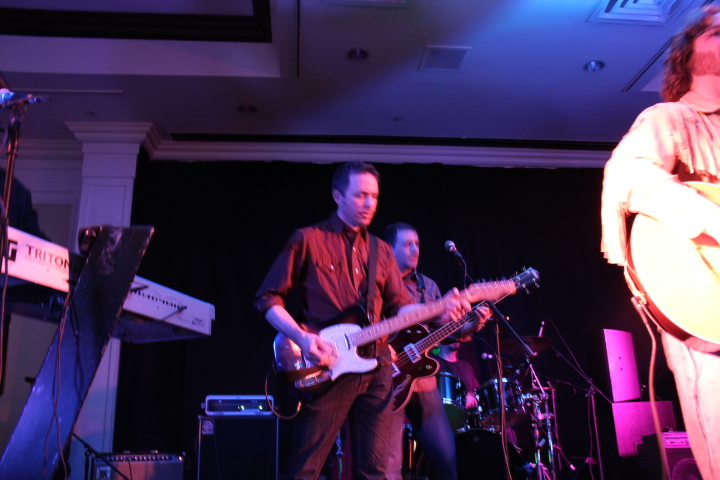
Unless you have a time machine that can transport you and your credit card back to 1958, there’s never been a better time than the present to buy a new electric guitar.
Even the most inexpensive instruments sound and play great, but having so many wonderful options at your disposal can distract you from finding the perfect ax.
So, how do you choose a guitar that will make you happy until you’re a rich rock star and every major manufacturer hurls free instruments at your feet? What follows are 10 things you should know before you surrender your hard-earned money to that former Winger member working the floor at your nearby music mega-retailer.
01. Good Looks
When surveying the seemingly endless racks of guitars at your local store, let your animal lust prevail—grab the instruments that catch your eye first. A cool-looking ax probably will inspire you to play a lot more than an ugly duckling with a fast action and killer tone. Do you think Jack White would be caught dead playing a Montgomery Ward Airline if it were chartreuse and magenta instead of red and white?
02. Good Licks
If you’re a beginner buying your first instrument, bring along a friend who knows how to play so he or she can help you make a good choice. However, you might want to wait until you can play reasonably well so you can make a choice on your own. And here is a crucial point: Do not play “Smoke on the Water,” “Eruption,” Enter Sandman” or “Smells Like Teen Spirit” in a music store, not unless you want to be beaten bloody with a cymbal and permanently barred from entering the store.
03. Unplugged
Before you plug the guitar in, test its acoustic properties by playing a few open chords, barre chords and single-note lines unplugged. It should sound loud, lively and sparkly—like a debutante after three gin and tonics. An instrument with good inherent acoustic tone will sound even better when you plug it in, but if it’s dead and dull from the get-go it ain’t likely to improve at all.
04. Know Your Woods
The materials used for a guitar’s construction significantly influence its tonal characteristics. Maple (commonly used for necks and fingerboards and sometimes for bodies) is a heavy, hard wood that provides bright tone. Mahogany (used for necks and bodies) offers a warmer sound and smooth sustain. Bodies made of light woods like swamp ash or basswood deliver lively acoustic properties. Before you buy, you should know more about wood than the average beaver (and after you learn to play your wood should know plenty about average beaver).
All the latest guitar news, interviews, lessons, reviews, deals and more, direct to your inbox!
05. Body Shop
Solidbody guitars can be built in just about any shape you can imagine. An instrument that looks like a medieval torture tool may look bitchin’ onstage if you’re playing with a Dutch death metal band, but it could cause permanent damage to your nether regions when you try to play it sitting down in the studio. If you’re looking for a good all-around ax for practice and performance, make sure the guitar feels comfortable whether you’re playing it standing up or sitting down.
06. Heavy Necking
Grasp the neck firmly with your fretting hand and run your fingers up and down the frets. The frets should feel smooth, with no sharp, rough or protruding edges, and the neck’s contour should fit comfortably in your palm. Remember what Johnnie Cochran said: “If it doesn’t fit, you must, uh, quit.”
07. Hardware’s True Value
Carefully examine every detail of the guitar’s hardware and learn how to identify good-quality parts. Avoid instruments with improperly aligned parts, screws inserted at odd angles, a nut that’s cut too deep or loose-feeling tuning pegs, knobs or switches. You may get a great bargain on a cheap instrument with lousy hardware, but investing in hardware upgrades won’t guarantee that you’ll end up with a great instrument. It’s like putting a Chanel bikini on a Chihuahua—all that extra fuss ain’t gonna change the fact that it’s still a dog.
08. The Pickup Guide
Pickups significantly influence a guitar’s tone. Single-coil pickups have bright tone and moderate output, while humbuckers sound warm and fat and usually have hotter output, which is why metal players love them. P-90-style pickups are big, wide single-coils that straddle the middle ground between the humbucker’s bark and a regular single-coil’s bite.
09. Plug and Play
When you first test the guitar through an amp, don’t go straight for the mega-distortion mode. Dial in a clean tone, keep the EQ controls set to a moderate level and pay attention to the guitar’s overall tonal characteristics (bright/dark, fat/thin, lively/dull, powerful/weak, etc.) and sustain, or lack thereof. Excessive amp distortion is the music retailer’s equivalent of the wonder bra—it makes things seem better than they really are—so don’t let the salesperson pump up the gain before you’ve determined how flat or full the guitar’s natural sound is.
10. Consider Your Options
Don’t choose a guitar solely on the basis of what your favorite players use. While most players prefer solidbody guitars, many semihollow and hollowbody models are worth consideration, especially if your musical tastes lean toward jazz, rockabilly or Sixties styles. During the Seventies, Ted Nugent proved you could play a fat hollowbody jazz box and still rock as hard as anyone, even if you were wearing a loincloth and bunny tail onstage. Choose the guitar that feels right for you—to thine own self be true.
